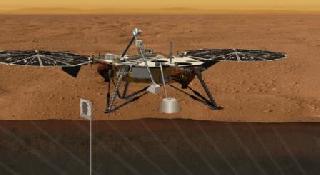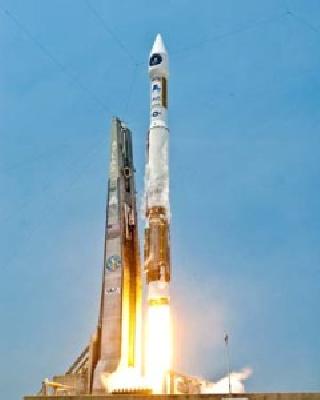
An artist's concept portrays the proposed Geophysical Monitoring Station mission for studying the deep interior of Mars. Photo by NASA/JPL-Caltech
PASADENA (BNS): NASA has selected three science investigations from which it will pick one potential 2016 mission to look at Mars' interior for the first time - study an extraterrestrial sea on one of Saturn's moons-or study in unprecedented detail the surface of a comet's nucleus.
NASA's Jet Propulsion Laboratory, Pasadena, California, would lead the Mars investigation.
Each investigation team will receive $3 million to conduct its mission's concept phase or preliminary design studies and analyses. After another detailed review in 2012 of the concept studies, NASA will select one to continue development efforts leading up to launch. The selected mission will be cost-capped at $425 million, not including launch vehicle funding, NASA said.
NASA's Discovery Program requested proposals for spaceflight investigations in June last year. A panel of NASA and other scientists and engineers reviewed 28 submissions. Three technology developments for possible future planetary missions also were selected.
-- Geophysical Monitoring Station (GEMS) would study the structure and composition of the interior of Mars and advance understanding of the formation and evolution of terrestrial planets.
The proposed Mars lander would carry three experiments. A seismometer for measuring Mars quakes would yield knowledge about interior materials from the crust to the core. A thermal probe beneath the surface would monitor heat flow from the planet's interior.
Radio capability for Doppler tracking of tiny variations in the planet's wobble would provide information about the size and nature of the core. Understanding more about the deep interior of another planet would enable important new comparisons with what is known about Earth's interior.
-- Titan Mare Explorer (TiME) would provide the first direct exploration of an ocean environment beyond Earth by landing in, and floating on, a large methane-ethane sea on Saturn's moon Titan.
-- Comet Hopper would study cometary evolution by landing on a comet multiple times and observing its changes as it interacts with the sun.
The three selected technology development proposals will expand the ability to catalog near-Earth objects, or NEOs; enhance the capability to determine the composition of comet ices; and validate a new method to reveal the population of objects in the poorly understood, far-distant part of our solar system, NASA said.
 Previous Article
Previous Article Next Article
Next Article












The Indian Air Force, in its flight trials evaluation report submitted before the Defence Ministry l..
view articleAn insight into the Medium Multi-Role Combat Aircraft competition...
view articleSky enthusiasts can now spot the International Space Station (ISS) commanded by Indian-American astr..
view article